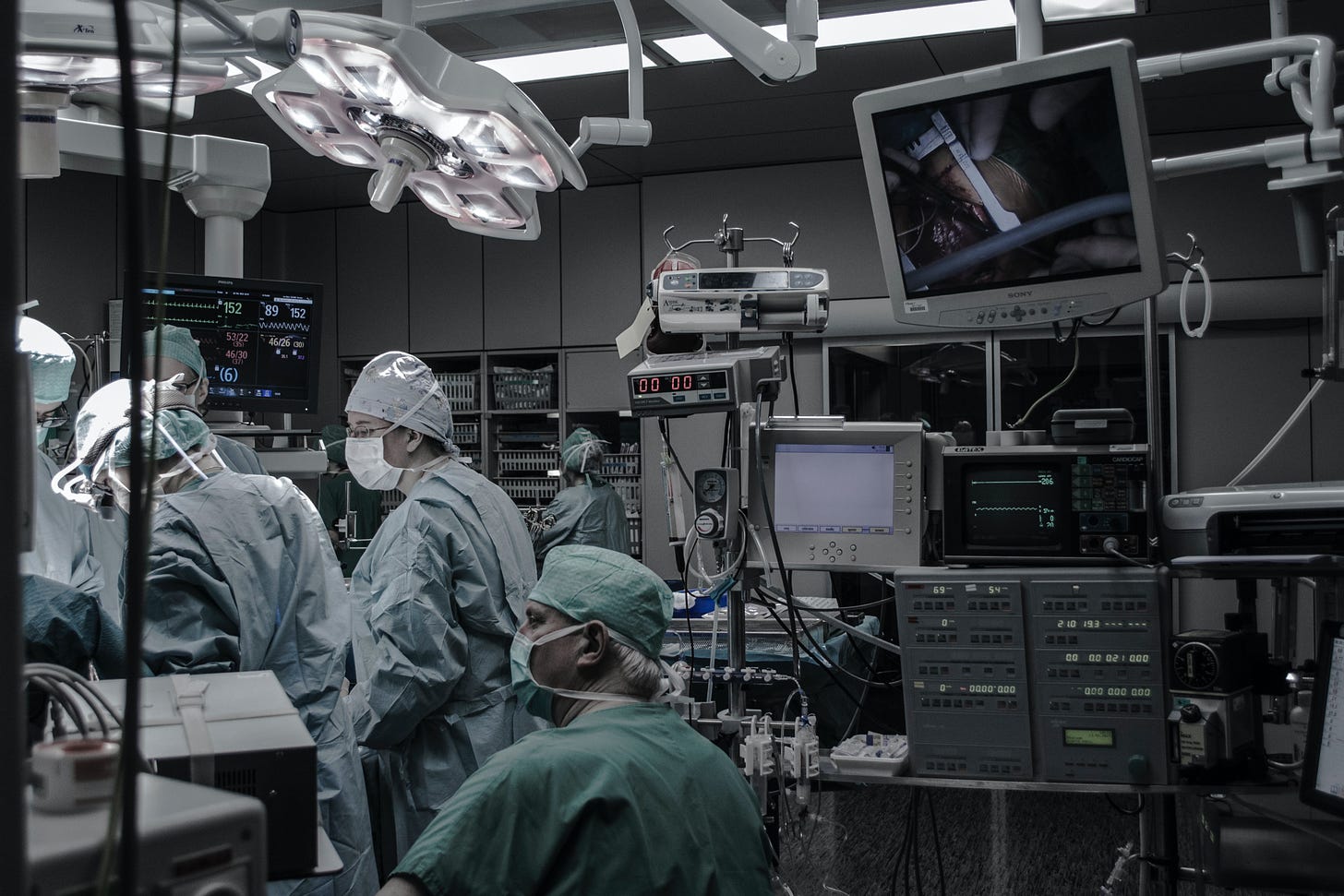Implementing AI in Hospitals: An Implementation Journey
By Jum’atil Fajar*
Unsplash: Photo by Piron Guillaume
My interest in implementing Artificial Intelligence (AI) in hospitals began when I attended a webinar conducted by the Indonesian Hospital Association with the title The Use of AI in Hospitals. One of the topics discussed in the webinar was the extent to which hospitals in Indonesia were prepared to implement AI. The topic was presented by Dr. Agus Mumtakin, Special Staff of the Board of Directors of the Cipto Mangunkusumo National Central General Hospital.
In his presentation, Dr. Mumtakin mentioned the importance of having a strategy in place so that the vision and objectives of implementing AI are in line with organisational goals of the hospital. In addition, it is necessary to also think about the type of talent you will need as part of the implementation, including data engineers and data scientists. Data engineers will manage and provide data for AI processing, while data scientists will design and build AI models. Operational aspects are also important to consider, including processes that will be used and applied when preparing data and the data storage infrastructure and type of computing AI processing needed.
Perhaps one of his most important and relevant recommendations was to start with a small-scale application of AI. Inspired by this, I reached out to several organisations to explore the prospects of implementing AI projects at the hospital were I work.
My research led to interesting findings. In some cases, the organisations had not yet started rolling out their initiatives, or the technology they used was not compatible with the ones we are using. After some deliberations and based on advice received from the Indonesia Artificial Intelligence Society, we decided to start our journey into AI with a relatively simple application call Neurabot.
Neurabot is an AI-powered telemicroscopy platform that allows users to store and analyse digitalised version of microscopic specimens. The hospital is currently exploring equipping its laboratory with the appropriate microtome equipment so that the application can be used to diagnose breast cancer. Another collaborative alternative that is being explored with Neurabot is the examination of peripheral blood smears to check for malaria parasites. Neurabot’s platform can detect various species of malaria plasmodium present in the blood. This is very helpful for the work of clinical pathologists to confirm whether the parasite that the platform shows is present or not. It is hoped that the better the platform's ability to detect parasites, the higher the accuracy.
While we are still testing the platform, this trial period will provide clinical pathology specialists and hospital laboratory personnel the opportunity to become familiar with Neurabot‘s platform.
Access to data and quality of the data are also key limitations when trying to implement AI initiatives at hospitals. Maura Widyaningsih, coordinator of the Kalimantan Chapter of the Indonesia Artificial Intelligence Society, highlighted that the clinical data owned by hospitals are often times incomplete, so it is quite difficult for researchers to utilize the available data. Similarly, Telly Kamelia, a specialist in internal medicine and pulmonary consultant, said that accessing patient data hospitals is not easy and even when the data is there, datasets are often incomplete.
Seeking to address this issue, I contacted the hospital's Information and Technology (IT) Team to ask about the readiness of the hospital in applying electronic medical records. According to the IT team, only the perinatology unit was willing to try to apply electronic medical records.
With this information in hand, I decided to invite all relevant stakeholders to attend a coordination meeting related to the pilot project of the application of electronic medical records in the perinatology unit of the hospital. During the meeting, we discussed how to address bottlenecks and obstacles that could challenge the process. Access to computers to record progress of patients was one obstacle that was easily overcome by making digital records accessible via mobile phones to all unit nurses.
In addition, the paediatricians also asked the IT department to facilitate recording the results of supporting examinations, such as laboratory or radiological examinations, to make it easier to compile a medical resume of the patient who returned home. The IT department has recently completed the request.
Our experience highlights the challenges of applying AI initiatives in hospital settings. However, lessons have also been learnt from this journey. The first one is to start small. Starting small allows the organisation to test and trial the technology, and to make the necessary adjustments along the way. It also helps show success and encourage others to join while also learning about what did not work to improve it in the future. We have also learnt that collaboration across teams is key. Technical teams are often not aware of the challenges and difficulties faced by doctors and nurses. Ensuring that teams can speak to each other and convey their concerns and challenges is key to a successful implementation.
While we still have many challenges ahead, I’m convinced starting this journey is necessary. AI will help transform the future of hospitals and we want to be part of it.
*Jum’atil Fajar is an AI enthusiast. He holds a Masters degree in Health Sciences. He helped develop the hospital management information system for RSUD dr. H. Soemarno Sosroatmodjo Hospital in Indonesia. He currently manages the Hospital Accreditation Data Management Information System.



